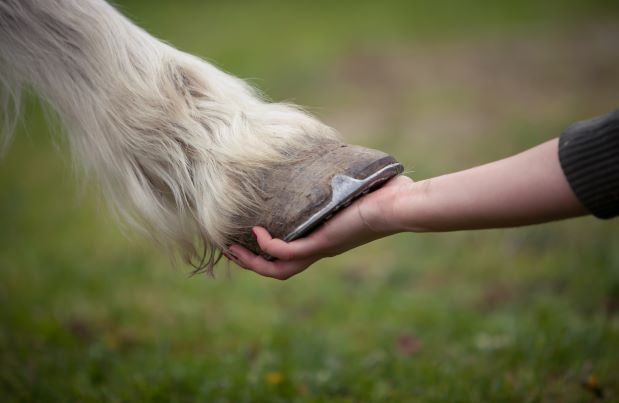There has been a rise in cases of laminitis in the practice over the last week to 10 days. Laminitis is one of the biggest welfare issues in the equine world in general. It is a painful disease process and kills many of our four legged friends each year.
Root Causes Behind the Hoof Havoc:
Laminitis is the inflammation of the sensitive laminae in the feet. These laminae support the pedal bone within the hoof capsule. The hoof capsule is a solid structure, so when these laminae become inflamed and swell within the hoof, this pressure causes the pain that the animal feels.
Clinical signs:
- Pulses in the feet: these can be felt on the sides of the pastern just below the fetlock. In a normal horse or pony they are very hard to find but in a laminitic they are usually very strong and throbbing.
- Unhappy to walk across hard ground. This is very noticeable at the moment with the frozen ground.
- Not willing to move round without struggling on the turn
- Lying down more
- In severe cases, they will rock back to take the pressure off their forelimbs, known as a rocking horse stance.
The underlying triggers:
There are several underlying factors behind laminitis, these are:
- Cushing’s disease (PPID)
- Equine Metabolic Syndrome (EMS)
- Endotoxic causes (infection)
Cushing’s and EMS cause insulin dysregulation. Insulin is a hormone that allows glucose to move from the blood stream into the cells where it is used as energy for cell process’s. If there is an increased need for insulin production this in turn damages blood vessels in the body and damages blood supply. In horses and ponies, the damage causes further damage to the laminae and this in turn causes laminitis.
Guarding Hoof Health:
Ultimately stopping regular bouts of laminitis is the most important thing. Every time a horse or pony comes down with another episode, they are further damaging the laminae and therefore the health and position of the pedal bone. The saying “no foot, no horse” is so very true in these cases
- Allowing the animals body to naturally lose weight in winter and “reset” the excess fat they have gained in summer is vitally important.
- Treating any underlying causes such as Cushing’s is also important. This can be done using Pergolide as a treatment. This helps to stop the increase of stress hormone ACTH within the body which in turn decreases the insulin dysregulation and therefore minimises the risk of further laminitic bouts.
- Regular trimming and foot balance in these cases can also prolong the lifespan of a laminitic. These are best done after x-rays are taken to allow your farrier to do his best job.
It is important than when you see any of the clinical signs above that your charge is put on a deep bed and a vet is called to help you make the best decisions for you and your horse. Quick medical attention is more likely to lead to a better outcome.
If you have any queries please feel free to phone our office to discuss it with us 01782 898102

